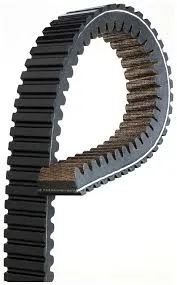- Arabic
- French
- Russian
- Spanish
- Portuguese
- Turkish
- Armenian
- English
- Albanian
- Amharic
- Azerbaijani
- Basque
- Belarusian
- Bengali
- Bosnian
- Bulgarian
- Catalan
- Cebuano
- Corsican
- Croatian
- Czech
- Danish
- Dutch
- Afrikaans
- Esperanto
- Estonian
- Finnish
- Frisian
- Galician
- Georgian
- German
- Greek
- Gujarati
- Haitian Creole
- hausa
- hawaiian
- Hebrew
- Hindi
- Miao
- Hungarian
- Icelandic
- igbo
- Indonesian
- irish
- Italian
- Japanese
- Javanese
- Kannada
- kazakh
- Khmer
- Rwandese
- Korean
- Kurdish
- Kyrgyz
- Lao
- Latin
- Latvian
- Lithuanian
- Luxembourgish
- Macedonian
- Malgashi
- Malay
- Malayalam
- Maltese
- Maori
- Marathi
- Mongolian
- Myanmar
- Nepali
- Norwegian
- Norwegian
- Occitan
- Pashto
- Persian
- Polish
- Punjabi
- Romanian
- Samoan
- Scottish Gaelic
- Serbian
- Sesotho
- Shona
- Sindhi
- Sinhala
- Slovak
- Slovenian
- Somali
- Sundanese
- Swahili
- Swedish
- Tagalog
- Tajik
- Tamil
- Tatar
- Telugu
- Thai
- Turkmen
- Ukrainian
- Urdu
- Uighur
- Uzbek
- Vietnamese
- Welsh
- Bantu
- Yiddish
- Yoruba
- Zulu
Oct . 08, 2024 09:25 Back to list
Competitive Pricing for Flat Belt Solutions in Today's Market
Understanding Flat Belt Prices Trends and Considerations
Flat belts are essential components in various industries, serving as vital links in the transmission of power and motion in machinery. Their significance in mechanical operations has led to an ever-evolving market, where pricing can vary greatly influenced by multiple factors. Understanding flat belt prices is crucial for manufacturers, engineers, and procurement specialists seeking to optimize their operations and budgets.
Market Trends and Price Fluctuations
The prices of flat belts are influenced by market trends, material costs, technological advancements, and regional demand. For instance, the increase in raw materials such as rubber and polyester, commonly used in manufacturing flat belts, can lead to higher prices. Additionally, the global supply chain disruptions witnessed in recent years, partially due to the COVID-19 pandemic, have created volatility in pricing structures. As industries recover and demand surges, prices are expected to remain fluctuating until supply levels stabilize.
Material Composition
The type of material used in flat belt manufacturing is one of the primary determinants of price. Rubber belts, for example, tend to be more affordable but may not provide the same level of durability and performance as polyurethane or nylon belts. These premium materials, while initially more expensive, can offer significant long-term savings due to their extended lifespan and reduced maintenance needs. Customers must assess their specific applications to choose the right balance between upfront costs and long-term value.
flat belt price

Application-Specific Design
Different applications may require specially designed flat belts, influencing their price. Custom dimensions, unique surface textures, and specific heat or chemical resistance can add to the cost. Manufacturers often charge a premium for these customized solutions, as they involve additional research and development. Businesses must conduct a thorough analysis to ensure that the investment in bespoke belts aligns with their operational needs and budget constraints.
Geographical Influences
Geographical considerations also play a vital role in flat belt pricing, as transport costs and local competition can sway prices. Regions with a high concentration of manufacturing may benefit from more competitive pricing due to increased availability and reduced shipping costs. Conversely, remote areas may experience higher prices owing to logistical challenges.
Conclusion
Navigating the complexities of flat belt prices requires an understanding of various influencing factors, including material choices, market trends, application requirements, and geographical aspects. As industries continue to evolve, staying informed about these elements will empower businesses to make educated purchasing decisions, ultimately enhancing their operational efficiency and economic viability.
-
Korean Auto Parts Timing Belt 24312-37500 For Hyundai/Kia
NewsMar.07,2025
-
7PK2300 90916-T2024 RIBBED BELT POLY V BELT PK BELT
NewsMar.07,2025
-
Chinese Auto Belt Factory 310-2M-22 For BMW/Mercedes-Benz
NewsMar.07,2025
-
Chinese Auto Belt Factory 310-2M-22 For BMW/Mercedes-Benz
NewsMar.07,2025
-
90916-02660 PK Belt 6PK1680 For Toyota
NewsMar.07,2025
-
drive belt serpentine belt
NewsMar.07,2025

